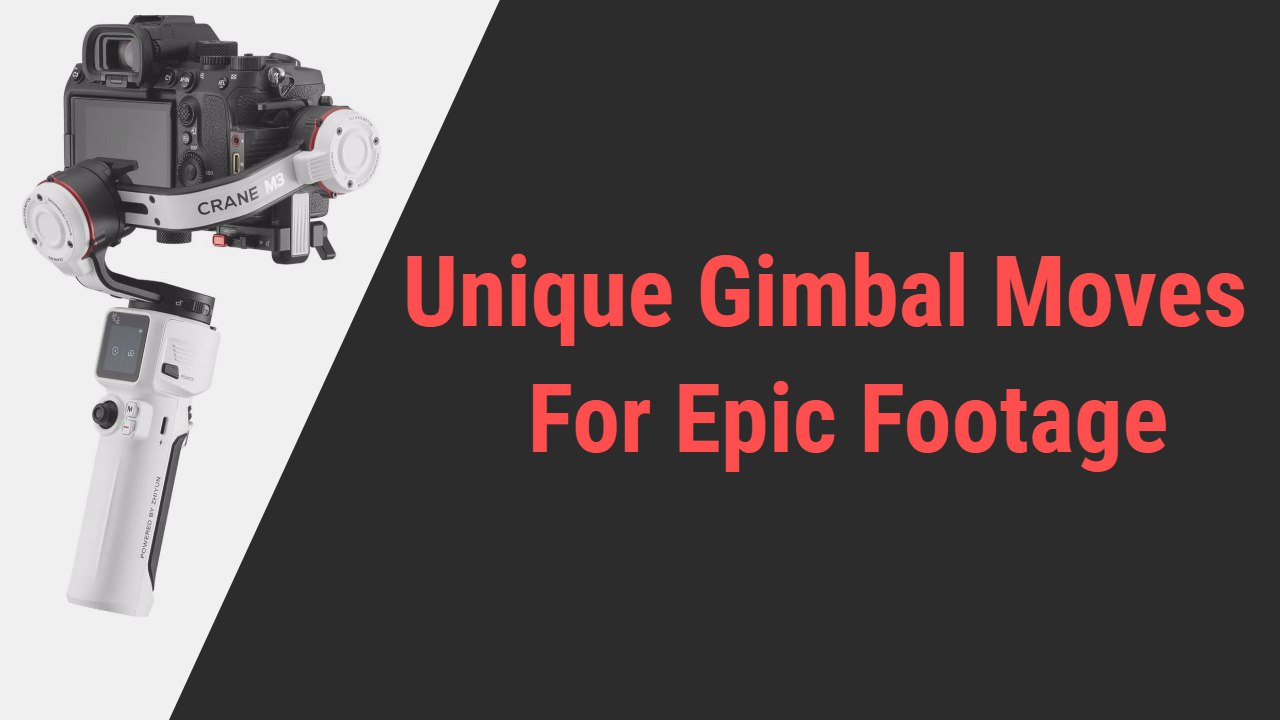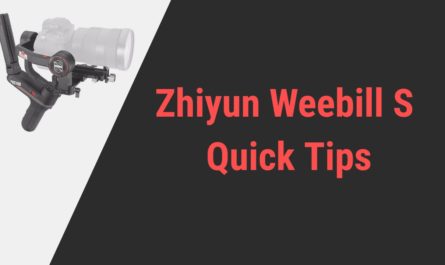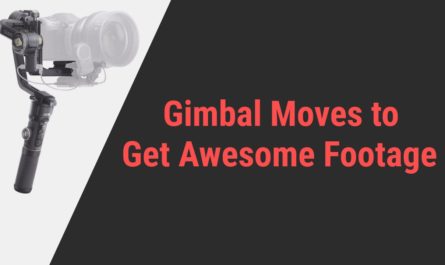If you are a keen videographer, there is no need to explain to you the worth of the almighty Gimbal. But if you are new in this area, you need to know that the gimbal is a highly versatile must-have tool for every photographer that gives you the freedom to shoot the dynamic subject with ease without any jittery, jolt, or blurriness involved in the footage.
A fairly priced gimbals with advanced tools and techniques have almost everything that opens up the door of immense professionalism, but some hidden qualities might give the most wondrous experience to all the filmmakers out there.
You might have seen the creativity of switching frames, the transition of shooting angle, and mingling or effects in cinematic videos; you can now pour that into your videos as well.
There are numerous gimbal movements dedicated to exposing amusing effects in every footage; you only need to recognize them and implement them the next time you are holding your camera. We are listing some creative and artistic-competent gimbal movements for an amazing effect result.
Gimbal attractive potential and doing
You must be already familiar with the incredible ability of the gimbal; if not, let us tell you a bit. A gimbal is a mechanical tool that was launched as a premium addition to your photography kit.
The gimbal is a device that is intended to eliminate the threat of camera shakiness and its effect. The advanced pivoted support system of the gimbal has room for mounting your camera firmly and then simply allows it to rotate smoothly along its own axis; this way, the camera can get a better version of the surrounding without any movement engaging.
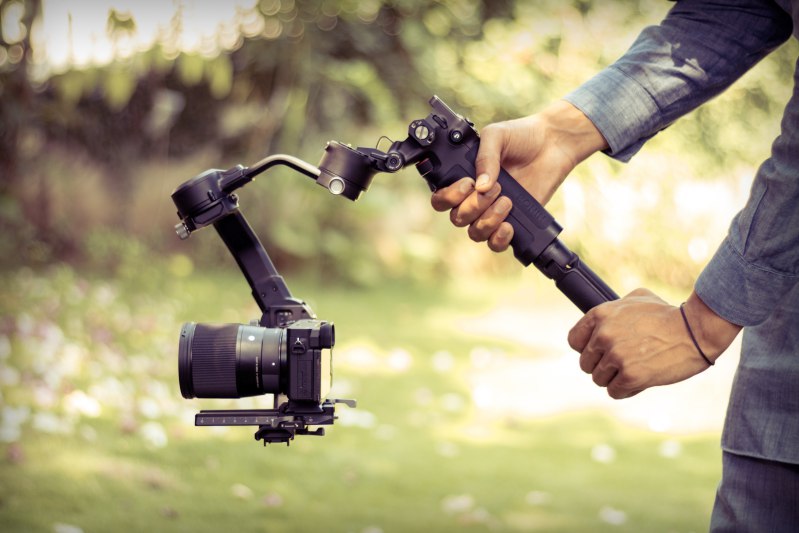
These gimbals are highly configured with an intelligent algorithm, magical motor, and, of course, highly intuitive sensor. This sensor catches the movement first while the algorithm and motor let it stabilize.
These gimbals are associated with straightforward engineering and ergonomic designing preventing any complaint of hand strain and ace away.
Now, if we continue talking about the gimbal, there are literally numerous points that can be listed here, but let’s talk about one of the major ones; its availability to experiment with shooting modes and creative angles.
Let’s see what are those creative gimbal movements that can make your dream come true.
Artistic Gimbal Movement for shooting amazing videos
We understand how fruitfully effective Gimbal usage can be, how the whole stabilization things get easier, and how you don’t have to worry about the quivering or jittering anymore. But having a gimbal isn’t enough to grab the impeccable great footage.
You need to experiment creatively and practice to get in the line and hit the most amusing shot result; Gimbal movement can help you with that.
Not all, but some of the artistic gimbal movements listed here can give you the fascinating experience of cinematic videography, so don’t forget to imply them next time you shoot.
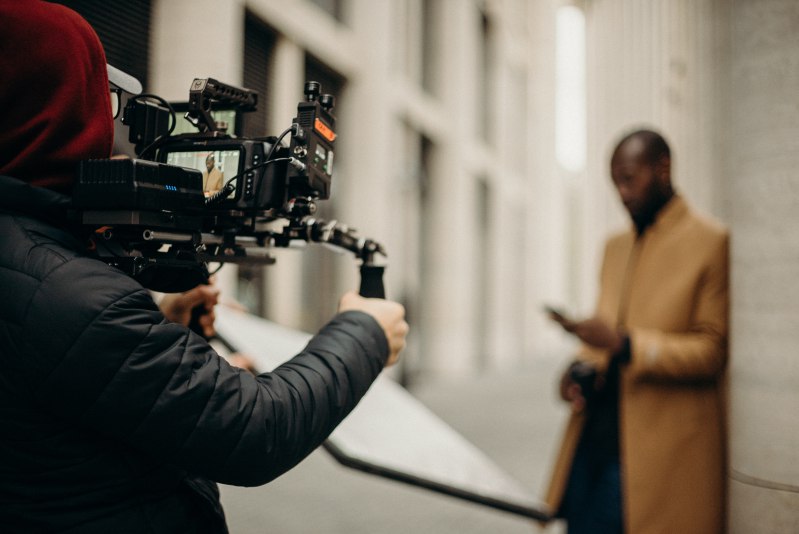
Orbit Mode- Orbit shot is one of the oldest and most popular modes used by professionals; this requires one to keep an eye on the subject and, from a certain distance, start moving in the circle with the subject in the center. This will give astonishingly creative-looking cinematic footage.
Parallax shot- Cleared by its name, parallax shooting is a perspective of shooting low angle with a certain distance from the subject and simply rotating or orbiting around with the slowest motion possible to around 180 degrees, keeping the subject still in the center.
Orbit parallax Shot- This is an absolute mingling of orbit and parallax shot; the creativity of orbit and the professional approach of parallax give out an amusing combination. The orbit parallax shot is required to keep the subject in the center while walking with the camera, taking an arch around it. It shows much difference from the regular one giving Hollywood-like cinematic effects.
POV Whip- It’s a creative derivative of the simple follow mode. It’s an idea of simply following your subject, but it has a quick reaction in between. For instance, you are following your subject and boom; you quickly move the gimbal to another direction getting a glimpse of another subject. It gives you the thrill of a transition shot.
The vertical pivot- Moving on to the next, the rarest of all but the most attractive shooting mode, the vertical pivot. This shooting mode includes a stationary subject and gimbal moving towards the subject with smooth motion and coming back to the frame from which the moving started. This gives the footage a slow-mo professional-looking cinematic footage.
Push-In/ Pull-out- Classic push-in shots include walking toward the subject while it moves away and pull-out shots signify walking backward with the subject moving toward the camera; now spice things up and shoot the regular Push-in/Pull-out with the middle lens switch. Supposedly you shoot pull-out at half distance with a 24mm lens, pause and switch to 16mm for the creative aspect.
Dolly Left/ Right- Similarly, in the traditional push-in and pull-out, you will slide the camera at a certain speed and way, only this time from left to right or from right to left, like a smooth slider or dolly. Remember, the motion shouldn’t be the fastest; just go with ease, and you will get entirely unique cinematic-looking footage.
Underslung push-in/pull-out Mode- Underslung Mode is another creative mode to try for cinematic effect; just shoot the low angle, much likely sweeping the ground. You can mingle push-in and pull-out by simply walking toward or backward, giving the whole shooting a dynamic, dramatic view of the subject.
Jib and Pan- the joystick jib shot is an absolute fascination that still gives the roller coaster thrill of the creative verdict. So, try practicing the jib shot by holding the gimbal overhead with any extended attachment rod or not, your choice. But if you want the actual effect of the jib shot, we suggest you add an extension rod while holding the gimbal overhead and simply pan to get the most dramatic vision of the subject.
Shallow push- Another creative way to use the classic push-in mode, but expect an entirely different and enthralling effect. This shallow pull shot is the simple push-in shot where you wall towards the subject but with a slight focus change and keeping the shallow depth of field to lowest, which eventually makes the subject out of focus, but when you move towards it and reach to the point, it comes into the focus with extreme sharpness. It’s an intriguing mode to shoot.
Crane Mode- Crane shot is the definition of perfection that works on the basic heal-to-head mechanism. The shot involves you prop your body in a squat position, bending your knees, and then slowly standing up without changing the gimbal direction. This shot can be captured to expose a wonderful artistic perspective.
Reveal Mode- You can showcase your mastery skill by shooting the effective reveal shot; the reveal mode requires shooting with your gimbal from behind any obstacle, moving side by side slowly, much likely revealing your subject with a relevant time range. These obstacles can be natural, or you can use any prop; either way, you get a dose of amusement.
Motion Time-lapse- The most underrated and yet most creative motion time-lapse modes allow you to capture the innovative time travel in the frame. Set the travel route along with the pan, tilt, and roll axes, and let the camera capture the skies, city, and surroundings in a time-lapse session in the smoothest way possible.
Freestyle wide shot– The gimbal is crafted to shoot the widest angle possible, so try shooting the freestyle wide mode. This is the idea of filming the broadest distance possible in the frame, covering all the activity and multiple subjects. This is a great mode for shooting action or event videos.
Additional Things to do with Gimbal for the Amusing Result
Apart from implementing these gimbals, you can also keep in mind these basic and effective tips that improve your shot result.
Focus– Focusing is the audience’s favorite technique that grabs their attention second; always experiment with manual and autofocusing.
Bokeh- Under the selective focusing technique, always use a bokeh filter to bestow the beautiful blurry background at the back, giving it a professional look.
Frequent Switching– Always try to do something new, keep experimenting with new shooting modes, or try some fusion of two different shooting modes, etc.
Additional Prop- Prop can make things attractively engaging for the audience, so try shooting with additional prop and add your customized perspective.
Tracking– Always use the subject tracking mechanism while filming cinema; keeping pace with our subject constantly gives the professional vibes
Balancing- Most importantly, always keep the gimbal balance; otherwise, no matter how creative you are will end up getting blurry, soft, edgy footage.
Summary
An advanced camera with a high-resolution lens might be the key element of cinematic shooting, but what you need is the experiment with shooting and creative practice with different modes.
Shooting regular one-stand footage and shooting each scene with three different angles and modes, you can see the level of video professionalism rising from zero to the peak.
Time-lapse, classic pull-out and push-in, and cranes devotedly give an enthralling effect to your cinematic footage, don’t they? Guess what others can do with your short film.
We sincerely hope that these greatest gimbal movements will seek out the immense attractiveness in your shooting result, making your footage impeccably stunning and envious of other rivals.
We can help you with more fascinating tips and tricks that assure you of a smooth and stable cinematic footage result; you only need to walk with us on this journey. Stay tuned for more!

